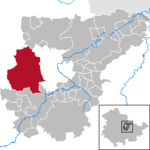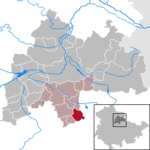Saxe-Weimar-Eisenach

Saxe-Weimar-Eisenach (German: Sachsen-Weimar-Eisenach) was a state of the German Empire, created as a duchy in 1809 by the merger of the Ernestine duchies of Saxe-Weimar and Saxe-Eisenach, which had been in personal union since 1741. It was raised to a grand duchy in 1815 by resolution of the Vienna Congress. In 1903, it officially changed its name to the Grand Duchy of Saxony (German: Großherzogtum Sachsen), but this name was rarely used. The Grand Duchy came to an end in the German Revolution of 1918–19 with the other monarchies of the German Empire. It was succeeded by the Free State of Saxe-Weimar-Eisenach, which was merged into the new Free State of Thuringia two years later. The full grand ducal style was Grand Duke of Saxe-Weimar-Eisenach, Landgrave in Thuringia, Margrave of Meissen, Princely Count of Henneberg, Lord of Blankenhayn, Neustadt and Tautenburg. The Saxe-Weimar-Eisenach branch has been the most genealogically senior extant branch of the House of Wettin since 1672.
Excerpt from the Wikipedia article Saxe-Weimar-Eisenach (License: CC BY-SA 3.0, Authors, Images).Saxe-Weimar-Eisenach
B 7, Grammetal
Geographical coordinates (GPS) Address Nearby Places Show on map
Geographical coordinates (GPS)
| Latitude | Longitude |
|---|---|
| N 50.983333333333 ° | E 11.166666666667 ° |
Address
B 7
99428 Grammetal
Thuringia, Germany
Open on Google Maps



